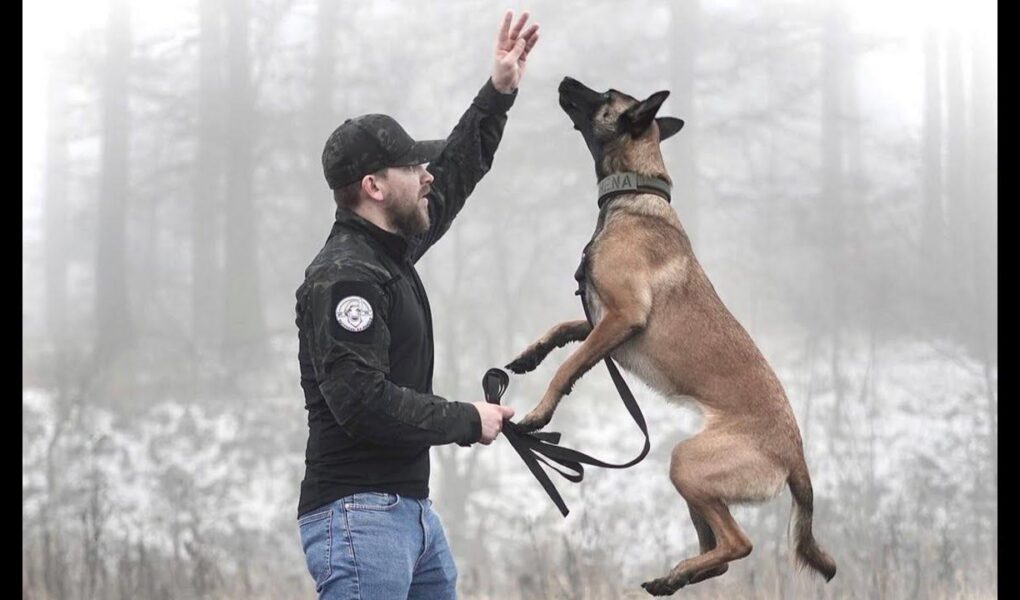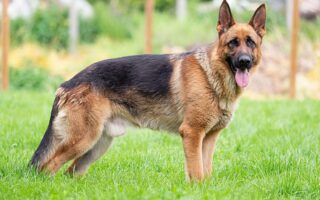Unlocking Potential: A Journey into Belgian Malinois Training
The Belgian Malinois, with its striking appearance and boundless energy, is more than just a beautiful breed; it is a cornerstone of canine intelligence and versatility. Often seen working alongside law enforcement and search and rescue teams, this remarkable dog thrives on challenge and companionship. As any seasoned handler will attest, the training process is both an art and a science—one that requires patience, dedication, and a deep understanding of this spirited breed. In this article, we will explore the nuances of Belgian Malinois training, delving into effective techniques, best practices, and the unique attributes of these agile companions. Whether you are a novice dog owner or an experienced trainer, embark with us on this exploration of how to nurture your Malinois into a well-adjusted, obedient, and fulfilling companion.
Table of Contents
- Understanding the Belgian Malinois Temperament for Effective Training
- Essential Training Techniques for Young Belgian Malinois: Building a Solid Foundation
- Advanced Training Strategies to Enhance Obedience and Agility in Belgian Malinois
- Common Training Challenges and Solutions for Belgian Malinois Owners
- Q&A
- The Conclusion
Understanding the Belgian Malinois Temperament for Effective Training
The Belgian Malinois is renowned for its intelligence, energy, and loyalty, making it a unique breed that thrives on mental and physical stimulation. Their temperament reflects a strong drive to work and protect, often leading to a bond with their handlers that is both profound and intuitive. This breed requires a training approach that takes advantage of their natural instincts while promoting positive reinforcement. A structured training plan is essential, as it can help channel their enthusiasm into productive behaviors. Practicing consistency and clarity in commands is key to establishing trust and respect within the owner-dog relationship.
To effectively train a Belgian Malinois, understanding their specific needs and characteristics is crucial. Some important aspects to consider include:
- High Energy Levels: Daily exercise and engaging activities are mandatory.
- Strong Prey Drive: Training should incorporate games that mimic hunting to keep them motivated.
- Intelligence: Regular mental challenges, such as puzzle toys or obedience exercises, can help prevent boredom.
- Socialization: Early and ongoing socialization with people and other animals is vital to developing a balanced temperament.
Fostering a positive environment will encourage the dog to respond well to training and allows for better control over their instinctive tendencies. Keeping sessions short but lively can also bolster attentiveness and excitement during training.
Essential Training Techniques for Young Belgian Malinois: Building a Solid Foundation
Training a young Belgian Malinois requires a blend of patience, consistency, and creativity. Since these dogs are known for their intelligence and high energy, utilizing a variety of training techniques can keep them engaged and eager to learn. Establishing a strong foundation begins with basic obedience commands such as sit, stay, come, and heel. Using positive reinforcement is key; rewards can include treats, praise, or playtime. Consider implementing the following engaging techniques:
- Clicker Training: A method that uses a sound to indicate desired behavior, reinforcing learning.
- Socialization: Introducing your puppy to different environments, people, and other animals to build confidence and adaptability.
- Agility Training: Incorporating fun obstacle courses to channel their energy while enhancing coordination and focus.
Tracking their progress is essential to maintaining motivation and ensuring effective training. Keeping a simple log can help you note achievements and areas needing improvement. Here’s a basic setup for your training log:
| Date | Command/Skill | Notes |
|---|---|---|
| DD/MM/YYYY | Sit | Responding well, added duration. |
| DD/MM/YYYY | Come | Improved recall with distractions. |
| DD/MM/YYYY | Heel | Maintained focus on leash. |
By employing these methods and keeping an eye on your progress, you’ll not only build a solid foundation of skills for your Belgian Malinois but also foster a strong bond that will last a lifetime.
Advanced Training Strategies to Enhance Obedience and Agility in Belgian Malinois
To foster a strong bond and enhance the capabilities of your Belgian Malinois, consider integrating advanced training strategies that go beyond basic commands. One effective method is the Behavior Adjustment Training (BAT), which helps dogs learn self-control and makes them more confident in various situations. This approach encourages dogs to make positive choices while minimizing stress. Additionally, the use of agility courses can stimulate your dog both mentally and physically, allowing them to channel their energy constructively. Incorporating elements like tunnels, weave poles, and jumps not only improves their physical fitness but also sharpens their focus and obedience.
Another successful strategy involves the concept of Play-Based Learning, where training is woven into fun activities. This can include games like hide and seek or fetch with specific commands, reinforcing their learning while keeping them engaged. Utilizing shaping techniques can also be beneficial, where you reward incremental steps toward a desired behavior, allowing your Malinois to understand and execute complex tasks. For a structured approach, consider implementing a training schedule that combines elements from various methodologies, ensuring a well-rounded development for your dog. Here’s a simple weekly training plan to guide you:
| Day | Activity | Duration |
|---|---|---|
| Monday | Basic Obedience Commands | 30 mins |
| Tuesday | Agility Training | 45 mins |
| Wednesday | Behavior Adjustment Training | 30 mins |
| Thursday | Play-Based Learning Games | 30 mins |
| Friday | Shaping Techniques | 30 mins |
| Saturday | Long Walks with Commands | 1 hour |
| Sunday | Rest & Bonding Time | – |
Common Training Challenges and Solutions for Belgian Malinois Owners
The Belgian Malinois is a highly intelligent and energetic breed, which can make training both a rewarding and challenging experience. One common obstacle owners face is their dog’s short attention span. This breed thrives on mental stimulation and physical activity, so it’s essential to keep training sessions engaging. To combat this challenge, try breaking your training into shorter segments of about 10-15 minutes and incorporating games, such as fetch or hide-and-seek, to hold their interest. Additionally, positive reinforcement through treats or praise can significantly enhance their motivation to learn.
Another frequent challenge is managing a Belgian Malinois’s strong drive, particularly during distractions. Owners often report issues with their dog’s focus waning when unfamiliar people or animals are present. To address this, it’s crucial to work on impulse control exercises, such as “leave it” and “wait.” Gradual exposure to distractions while rewarding calm behavior can also help improve focus over time. Below is a simple exercise table that can assist in building focus amidst distractions:
| Exercise | Description | Goal |
|---|---|---|
| Focus Drill | Hold a treat by your face and say “look.” Reward when they make eye contact. | Enhance attention on command |
| Controlled Walk | Walk in a busy area with treats to reward calm behavior. | Improve focus around distractions |
| Socialization Session | Regular playdates with other dogs to practice calmness. | Develop impulse control with peers |
Q&A
Q&A on Belgian Malinois Training
Q1: What makes Belgian Malinois an ideal breed for training?
A1: The Belgian Malinois is renowned for its intelligence, agility, and versatility. This breed possesses a natural eagerness to please, which, combined with its strong work ethic, makes it highly responsive to training. Belgian Malinois are often employed in police and military roles due to their ability to learn complex tasks quickly and their high energy levels. Their instinctual drive and loyalty further enhance their aptitude for training, making them exceptional candidates for various disciplines, from agility to obedience.
Q2: At what age should training start for a Belgian Malinois?
A2: Ideally, training for a Belgian Malinois should begin early — around 8 weeks of age. Early socialization is crucial, allowing them to gain experience and adapt to various environments, sounds, and stimuli. Basic obedience training can commence shortly thereafter, focusing on commands like sit, stay, and come. It’s important to remember that the formative months in a Malinois’s life set the foundation for future learning, so consistent, positive reinforcement during this period is vital.
Q3: What training methods work best for Belgian Malinois?
A3: Positive reinforcement is the most effective training method for Belgian Malinois. This approach involves rewarding desired behaviors with treats, praise, or play, which encourages them to repeat those behaviors. Clicker training can also be beneficial, providing a clear marker for desired actions. Given the breed’s intelligence, varied training techniques, including agility courses and scent work, can keep their minds engaged and prevent boredom, which can lead to undesirable behaviors.
Q4: How can I manage the high energy levels of a Belgian Malinois during training?
A4: The high energy levels of a Belgian Malinois can be managed by incorporating regular physical and mental exercises into their training regimen. Before starting a training session, a vigorous walk or play session can help expend some energy. Additionally, mixing in activities such as agility or obedience drills, and providing puzzle toys or scent games, can help focus their energy constructively, leading to more effective training sessions.
Q5: How do I address behavioral issues during training?
A5: Addressing behavioral issues in a Belgian Malinois requires patience and consistency. First, identify the root cause of the behavior, whether it’s a lack of structure, physical exercise, or socialization. Redirecting undesired behaviors with positive reinforcement for good choices is essential. For example, if your Malinois is too vocal during training, rewarding calmness instead can promote the desired behavior. If issues persist, consulting with a professional dog trainer experienced with the breed may provide tailored strategies for your specific situation.
Q6: Are there any breed-specific considerations to keep in mind when training a Belgian Malinois?
A6: Yes, there are several breed-specific considerations to keep in mind. Belgian Malinois require a structured environment with clear boundaries and consistent training. They thrive on routine and can become anxious or destructive if left alone for prolonged periods. Mental stimulation is just as important as physical exercise; incorporating varied training sessions can keep them engaged. Additionally, socialization with other dogs and people is essential to prevent over-guarding tendencies, ensuring your Malinois grows into a well-rounded companion.
Q7: How do I maintain long-term training success with my Belgian Malinois?
A7: Long-term training success with a Belgian Malinois hinges on consistency, variety, and ongoing engagement. Establish a regular training schedule, but be willing to adapt as your dog learns. Continuing education through advanced training classes can help keep your Malinois mentally sharp and provide new challenges. Regularly evaluating and refreshing their training repertoire enhances their skills and strengthens your bond. Lastly, remember to celebrate small victories and have fun — a happy Malinois leads to a proactive and focused learner!
The Conclusion
As we close the chapter on our exploration of Belgian Malinois training, it’s essential to remember that every dog is a unique individual, infused with personality, instincts, and energy. The journey of training these remarkable working dogs is as much about building a bond as it is about instilling discipline. With patience, consistency, and a dash of creativity, you can unlock their full potential, transforming them from loyal companions into skilled partners in various fields of work and play.
Whether you are a seasoned trainer or just beginning to navigate the world of canine education, the principles discussed in this article serve as a foundation for nurturing a well-rounded Belgian Malinois. As you embark on this rewarding adventure, don’t forget to celebrate the small victories along the way—a wagging tail, a newfound trick, or a moment of mutual understanding. After all, training is not just about obedience but about fostering a strong relationship built on trust, respect, and joy. Your Malinois is more than just a breed; they are your partner, and together, you can achieve great things. Here’s to the journey ahead—may it be filled with learning, laughter, and endless tail wags.



